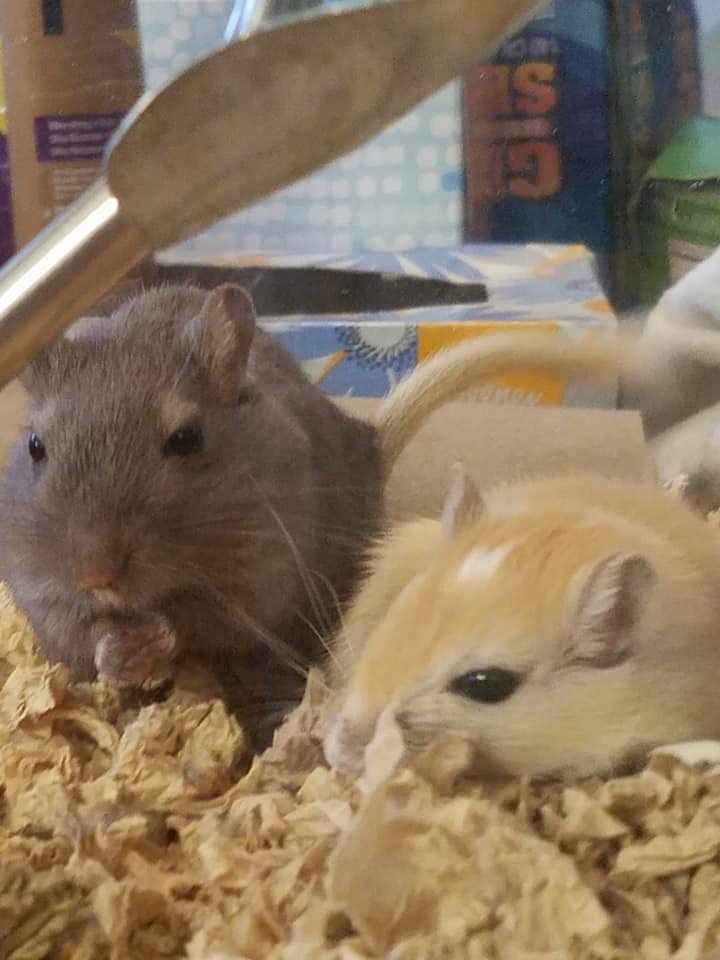
So, what makes Burmese gerbils different from regular gerbils? Well, they’re known for their striking colors and friendly temperament. If you’re new to the concept of breeding these playful pets, don’t worry! I’m here to walk you through everything you need to know. Whether you’re dreaming of tiny baby gerbils scurrying around or just want to understand their care better, let’s dig into the world of Burmese gerbils and discover the joys of breeding them.
Understanding Burmese Gerbils
Burmese gerbils are a specific color variation of the Mongolian gerbil, and they have a sleek, glossy coat that typically comes in a rich chocolate or dark brown hue. These little critters are not just cute; they’re also known for their playful and social nature. If you’ve ever observed gerbils in their habitat, you’ll notice they love to dig, burrow, and, yes, play with each other. That’s part of what makes breeding them so rewarding.
Their social behavior is something you should keep in mind. Unlike some other pets that can be quite solitary, gerbils thrive in pairs or small groups. They form strong bonds and often engage in playful antics, making them entertaining to watch. So, before you start breeding, understand their needs—the social aspect is just as crucial as their diet and habitat.
When considering breeding, take some time to familiarize yourself with gerbil genetics. Burmese gerbils have specific traits that can be passed on to their offspring. Understanding color genetics can help you predict what their babies will look like. Plus, it’s always a bit of fun to see how different colors and patterns can show up in a single litter.
Setting Up the Perfect Environment
Creating a comfortable and safe environment is key for your breeding pairs. Start with a spacious cage—something that allows them to move freely and explore. A good-sized gerbil cage should have plenty of room, as these little guys are quite active. You can find cages specially designed for gerbils, with multiple levels and tunnels to encourage their natural behavior.
Make sure the bedding is safe and suitable. Avoid cedar or pine shavings, as they can affect their respiratory health. Instead, opt for aspen shavings or paper-based bedding for a more comfortable and healthier environment. This will help keep your gerbils happy and healthy, which is exactly what you want when you’re thinking about breeding.
Don’t forget about enrichment! Adding chew toys, tunnels, and sand baths can create a stimulating environment. This not only keeps your gerbils entertained but also encourages healthy behavior, which is essential for successful breeding.
Choosing Breeding Pairs
Not all gerbils are created equal, especially when it comes to breeding. When selecting your breeding pair, consider their genetic background and temperament. Healthy gerbils with good genetic traits will give you the best chance of producing strong offspring. Look for pairs that exhibit a friendly disposition and have no signs of hereditary health issues.
Here’s the thing—it’s also important to avoid inbreeding. Breeding siblings or closely related gerbils can lead to health problems in the offspring. Instead, look for gerbils from different genetic lines to ensure diversity. This can be done through local breeders or pet shops that specialize in healthy animals.
If you’re uncertain about a pair or want to explore genetics further, talking to an experienced breeder can provide valuable insights. They can guide you on compatibility and genetics, ensuring you’re on the right track for successful breeding.
Breeding Timeline and Care
Once you have your breeding pair set up, you might be wondering how long it will take before you see those adorable babies. Burmese gerbils have a relatively short gestation period, lasting about 24 to 26 days. During this time, provide extra care to the pregnant female.
Nutritionally, she’ll require a high-quality diet rich in protein. Consider adding fresh veggies and high-quality pellets to support her health and the babies’ development. Fresh water should always be available, too. It’s essential to keep her environment clean and stress-free to promote a successful pregnancy.
When the big day arrives and the babies are born, resist the urge to interfere too much. Keep the nesting area cozy and monitor the mother’s behavior. She’ll usually do a great job caring for her little ones. After a few weeks, you’ll notice the babies beginning to explore their surroundings, and that’s when the fun really starts!
Socializing the Baby Gerbils
As the babies grow, socializing them becomes essential. Start handling the little ones gently once they’re about 3-4 weeks old. This is a crucial time for them to become accustomed to human interaction. Regular, careful handling will help them grow into friendly pets.
You might want to have a few friends or family members over to help with this process, too. Just be sure to supervise interactions, especially when other pets are around. The goal is to make them feel comfortable and safe—this way, they’ll grow into sociable, happy gerbils.
Another key aspect to keep in mind is that gerbils are social animals. They thrive best in pairs or small groups, so if you’re considering keeping them as pets, think about adopting two from the same litter or introducing them to existing gerbils. This will help avoid loneliness and keep them engaged.
Finding New Homes for Gerbils
Once your babies are ready to find homes, it’s important to think about how to do this responsibly. Begin by reaching out to friends or family who might be interested in adopting a gerbil. It’s great to have a connection with potential owners; you can share care tips and ensure they’re ready for the responsibility.
If you need to find homes outside your circle, consider reaching out to local pet shops or rescue organizations. They might help with placement or provide you with tips on finding suitable adopters. Always aim for homes where the new owners understand gerbil care and are prepared for the commitment of having pets.
Remember, finding a good home is just as important as breeding itself. You want to ensure each gerbil goes to a loving and caring environment. This means they’ll have a chance to thrive and bring joy to their new families.
Common Challenges in Breeding Burmese Gerbils
As with any breeding endeavor, you might face a few challenges along the way. One common issue can be unexpected aggressive behavior between gerbils. To prevent this, monitor the pairs closely during mating and after the babies are born. If aggression occurs, you might need to separate them temporarily to keep everyone safe.
You could also deal with issues like low birth rates or health problems in newborns. It’s crucial to be aware of the signs of trouble and seek veterinary advice if any concerns arise. Keeping your gerbils healthy and safe is always the top priority.
All in all, breeding Burmese gerbils can be an incredibly rewarding experience, provided you’re well-prepared and informed. Remember to stay patient and attentive to your gerbils’ needs. With the right approach, you’ll not only enjoy the process but also create a thriving little family of your own.
In conclusion, breeding Burmese gerbils is a journey that comes with its own set of joys and challenges. By understanding their needs and preparing well, you can foster a beautiful environment for both parents and babies. And who knows? You might just find that those tiny paws and whiskers bring a whole new level of happiness to your life.

